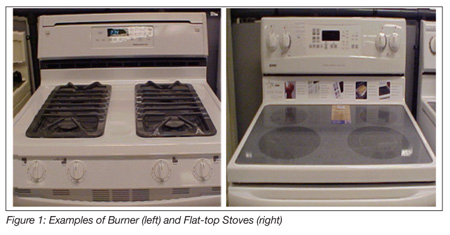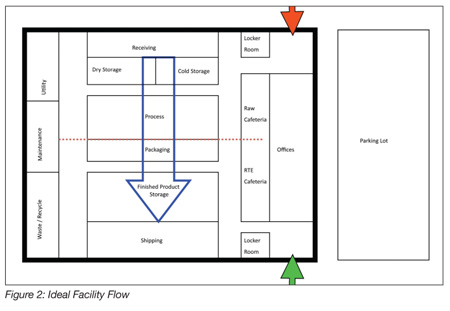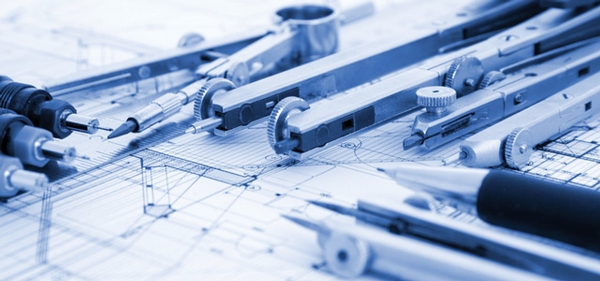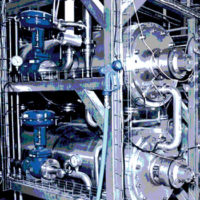In my 32 years in the food industry, I have gone from not having a clue about what sanitary design was to now understanding and believing that the application of sound sanitary design principles in how we build and install food manufacturing facilities and food manufacturing equipment is a key component of an organization’s future success in the food industry.
If sanitary design principles are a key component of an organization’s future, why then would not all food manufacturing companies include sound sanitary design principles in every one of their capital projects? The answer to this question, I believe, is because too often the industry looks at sanitary design from the capital side of the equation. This capital-driven perspective often presents a skewed picture of the true organizational value of sanitary design, and it does not examine the true cost of the asset over its entire life cycle but only the up-front capital cost.
Business Philosophy
Most all capital spending business philosophies include the expectation that the organization will gain a future return for the capital dollars the organization commits to a project, such that, the project investment meets and/or exceeds the organization’s timeframe for a positive return (payback) on the capital invested. For many companies, the timeframe for a project’s expected payback is typically 2 to 3 years for a return on investment (ROI). Projects that do not meet the timeframe for a positive return on investment are many times not funded.
This business philosophy, which looks at sanitary design solely from a capital perspective, may make the inclusion of sound sanitary design principles in a project a challenge. On many occasions, the capital cost of including sound sanitary design principles in a project’s scope translates into the project’s ROI not meeting the organization’s requirements and, consequently, into the project not being funded. As a result of a project not meeting an organization’s ROI requirements, some of the sound sanitary design principles may be pulled from the project’s scope (along with other project items) so that the project will be capable of meeting the required ROI and receive funding. One consequence of such an action is that the organization’s level of risk may increase, and the organization may lose additional operational advantages that sound sanitary design principles provide. While project scope adjustments are a normal process to which all projects are subjected in an effort to better manage capital allocations, many times, sanitary design principles are removed to make the project more attractive for funding.
Many believe that sanitary design principles only support the organization’s food safety program and that food safety risks can be managed via procedures rather than by spending capital. While this method can certainly work and be effective, it almost certainly presents a higher-risk profile for the organization.
The Role of Sanitary Design
Sanitary design is much more than principles that support an organization’s food safety program. Sanitary design principles can also be a driver of multi-year operational efficiency gains! To understand how sanitary design helps drive operational efficiency gains, one must understand the definition of sanitary
design.
Sanitary design is the application of design techniques that allow the timely and effective cleaning of the entire manufacturing asset.
The above definition now begins to show the value of sanitary design principles more clearly with the words “timely” and “effective,” which are the same terms used when talking about operational efficiency. Sanitary design is about food safety, quality and operational efficiency! When viewed from this perspective instead of solely from a capital ROI perspective, the true value of sanitary design becomes clear.
An organization must look further than their capital spending on a project and realize that by financing and applying sound sanitary design principles within their projects, future operational efficiencies may be gained in terms of labor savings. Those savings may occur not once but for as long as that asset is in operation (i.e., for the next 10, 20, 30 or more years that the asset is in use), whether it is a piece of equipment or a manufacturing room/facility. By viewing sanitary design not only from a capital perspective but from an operational cost savings of the asset over its useful life expectancy, one can begin to understand the benefits of sanitary design.
Benefits of Sanitary Design
If a well-designed piece of equipment (or facility) can be cleaned more effectively in less time, then sanitary design has not only added value to support food safety and quality, but it has also added value by supporting the organization’s operational efficiency objectives in reducing the amount of labor required to clean the equipment and/or facility.
 Think about two stoves. One stove is an older model with grates and burners, while the other stove is a newer, smooth, flat-top-style stove with no burners and no grates. Both stoves are functionally identical: they cook, they warm, they heat, they bake, etc.; however, the smooth, flat-top surface of the newer stove can be cleaned much more effectively and much more quickly than the stove with grates and burners. Thus, the sanitary design of the smooth, flat-top stove provides an operational efficiency advantage in labor savings (in addition to more effectively supporting food safety and quality) compared to the older stove with burners and grates (Figure 1).
Think about two stoves. One stove is an older model with grates and burners, while the other stove is a newer, smooth, flat-top-style stove with no burners and no grates. Both stoves are functionally identical: they cook, they warm, they heat, they bake, etc.; however, the smooth, flat-top surface of the newer stove can be cleaned much more effectively and much more quickly than the stove with grates and burners. Thus, the sanitary design of the smooth, flat-top stove provides an operational efficiency advantage in labor savings (in addition to more effectively supporting food safety and quality) compared to the older stove with burners and grates (Figure 1).
I have seen many examples where the choice not to spend capital on sanitary design principles resulted in much higher operating costs over the life of an asset, which can range from 10 to 70 years.
One such example was during a visit to a facility during a capital construction project. I immediately noticed that the floor had not been replaced and sloped appropriately to allow all water to effectively flow toward the drains. When I asked about why the floor only had a surface application and had not been replaced and sloped so it would self-drain, I was told that a business decision was made not to spend the capital ($1.2M) to replace the floor because the payback just was not there. This is a classic example of judging sanitary design principles solely based on capital ROI.
A few months later, I returned to the project to witness the start-up of the equipment and room and to observe the sanitation cycle for the first time. What I saw the next morning were 22 plant employees using squeegees to push water toward the drains for 1 hour and 15 minutes. Think about the on-going cost of that labor over the next 20 to 70 years while that room is used for food production. Some quick math gives us a better understanding:
22 employees × 1.25 hours per day × 220 days per year the line is cleaned = 6,050 hours/year
6,050 hours/year × $30.00/hour fully loaded pay rate = $181,500/year to squeegee water to a drain
ROI of $1.2M divided by 181,500/year = 6.61 years
As you can see, spending the $1.2M did not meet the capital ROI requirement of a positive return in 3 years; however, if the $1.2M had been included in the project and the floor had been replaced and sloped to drain, after 6.61 years, the $181,500 that would not have been spent on labor to squeegee the floor would go to the organization’s bottom line, perhaps for the next 50 or more years that the floor/room is used to produce food products. In addition, the labor that is now continuing to squeegee the floor every morning after sanitation could be put to more efficient and more productive use elsewhere, or perhaps, having a floor that self-drains and does not require labor to get water to the drain might mean that production begins 1 hour and 15 minutes earlier, thus increasing the operational efficiency of the production line.
Labor, however, is not the only area that sanitary design may impact. By looking at the cost of an asset over its expected life cycle, we begin to see areas of operational expense other than labor that may be decreased with the application of sanitary design principles.
Utilizing sanitary design principles in projects may result in the following:
• Less rejected product
• Less product placed on hold
• Less product reworked
• Less product destroyed
• Less effluent and biochemical oxygen demand
• Less pre-operational testing expense
• Less investigative swabbing expenses
• Less consumer complaints
• A possibly lower potential for a recall of contaminated product
As shown above, the application of sound sanitary design principles to food manufacturing capital projects has the ability to deliver more value than at first glance. To better understand that value, an organization must be able to recognize that sanitary design not only helps to support their food safety philosophy but also supports the manufacturer’s business philosophy.
No organization has unlimited capital to spend, but sanitary design principles may be an area that provides a greater benefit from the capital than previously thought, not from an ROI perspective but from an on-going operational perspective that may return substantial savings to the bottom line for many years to come. An organization’s leadership must become more knowledgeable regarding the value of sanitary design, and those leaders must understand how sanitary design supports the overall business philosophy of the organization to help guide the present and future expenditure of capital dollars on projects.
Sanitary Design Principles for Food Manufacturing
So what are the key sanitary design principles for food manufacturing? While there are different versions of sanitary design principles, such as from the American Meat Institute, the Grocery Manufacturers Association, and the European Hygienic Equipment & Design Group, the basic sanitary design principles are the following:
 • Separate Raw from Ready-to-eat (RTE)
• Separate Raw from Ready-to-eat (RTE)
This principle revolves around the building design and equipment layout so that personnel and material movements are capable of being managed to prevent potential cross-contamination (see Figure 2). Typically, this principle has physical separation of the raw side of the building from the RTE side of the building for both material and personnel.
Since many food plants are 30 years old or older and were added onto over the years, physically separating personnel and material movements between raw and RTE foods must be considered for all capital projects.
• Must Be Cleanable
Both the food plant and equipment must be constructed and maintained to sustain cleanability and to prevent bacterial and insect ingress, survival, growth and reproduction, including equipment, walls, floors, ceilings, doors and insulation. Some examples of non-cleanable surfaces would be areas that are inaccessible for cleaning and inspection, such as flat-to-flat surfaces and niche areas that cannot be physically cleaned or inspected for cleanliness.
• Made of Compatible Materials
Materials of construction used for the facility structure must be completely compatible with the product, environment, cleaning materials used and the method of cleaning. Equipment materials of construction must be inert, non-porous and nonabsorbent.
This principle’s main points are to assure that the product being produced and the chemicals used for cleaning are compatible with the materials of construction. Many times, the materials chosen do not match up well with the corrosive cleaning chemicals being used. This typically results in a greatly reduced asset life cycle for both the building and the equipment.
• Surfaces Smooth and Accessible
All parts of the product zone shall be free of pits, cracks, corrosion, recesses, open seams, gaps, lap seams, protruding ledges, inside threads, bolts, rivets and dead ends, and shall be readily accessible for cleaning and inspection and be easily disassembled for cleaning with the use of as few tools as possible.
One must be able to have access for cleaning, sanitizing and inspecting. Many times, this concept can be in conflict with the Environmental Health & Safety (EH&S) function; it must be a collaborative event to assure that the needs of the EH&S group and the inclusion of this principle within equipment/facility design are achieved.
• Must Be Self-draining
Equipment shall be self-draining to assure that water, product or liquid does not pool on the product zones and that liquid cannot drain, be drawn or drip onto product zone areas. This would include any overhead surface that might drip onto exposed products, including primary packaging that touches product. This principle would also include the example of using squeegees to push water toward a drain, as the floor clearly was not self-draining.
• Framework Not Penetrated
Tubular steel equipment framework must be totally sealed and impenetrable. Bolts, studs, etc. must be welded to the surface of the tubing and not attached via drilled or tapped holes. Tubular steel, once penetrated, will collect moisture and bacteria within the equipment framework until the water and bacteria drains out, potentially contaminating the manufacturing environment
• Proper Ventilation
Adequate ventilation of appropriately filtered air should be provided to prevent the formation of condensation, odor or mold that could result in contamination of raw materials or food.
This principle is often not funded due to the expense of heating/ventilation/air conditioning (HVAC) systems. However, on numerous occasions, I have seen employees line up every morning to squeegee the ceilings and overheads to remove condensation from these surfaces. Like the floor, having the proper investment in HVAC systems to adequately ventilate a manufacturing area from the humidity of the sanitation cleaning cycle will provide labor savings and may prevent a food safety event if condensate drips down onto product contact surfaces.
Summary
Sanitary design principles are not “rocket science,” rather, they are common sense ideas that, when viewed from the definition of “…designs that allow the timely and effective cleaning…” of the equipment and/or facility, create a different point of view about the value they bring to an organization. It is vital that this message is heard and understood by food organizations’ leaders as decisions about capital spending for projects are made.
If business leaders can see the value of improved sanitary design in their capital projects, those leaders are choosing to invest in their company’s on-going profitability by reducing their food safety risk profile, improving the quality of their products and creating improved operational efficiencies from their sanitation function. As a business leader, would you not embrace each of these items as key pieces of your business philosophy?
Unfortunately, many business leaders do not understand the value of sound sanitary design principles as discussed in this article and therefore choose to employ only the capital ROI philosophy. When this occurs, those leaders who do understand the value and spend capital for the inclusion of sound sanitary design principles within their capital projects create a competitive advantage over those organizations that do not.
So, is sanitary design a competitive advantage? If your competitor is not investing in sanitary design principles in their capital projects and you are, then the answer is Yes—sanitary design is a competitive advantage!
Randy K. Porter is the director food safety, hygiene design and sanitation at ConAgra Foods. He has worked in the food industry for more than 31 years. His previous industry experience, in both domestic and international roles was with Kraft/Nabisco, Nabisco, Dannon NA and Prairie Farm Dairies.
Sanitary Design: A Competitive Advantage?




